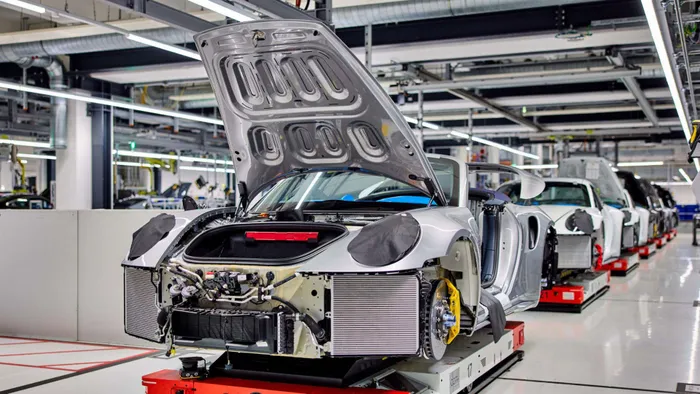South Africa's automotive industry welcomes interest rate cut amid economic challenges
INTEREST RATES

The Automotive Industry has responded well to the news of a 25 basis point interest rate cut announced by the South African Reserve Bank at its latest Monetary Policy Committee meeting on Thursday.
Image: Supplied
The South African automotive industry has responded positively to the recent announcement of a 25 basis point interest rate cut by the South African Reserve Bank (Sarb), following its latest Monetary Policy Committee meeting this Thursday.
The repo rate now stands at 7%, resulting in a new prime lending rate of 10.50% for commercial banks. This decision has been hailed as a significant relief for both consumers and businesses navigating an increasingly challenging economic landscape.
Brandon Cohen, Chairperson of the National Automobile Dealers’ Association (NADA), expressed optimism regarding the implications of the rate reduction.
“As a result, the prime lending rate for commercial banks drops to 10.50%. The NADA welcomes this decision, which offers meaningful relief to consumers and businesses alike in a persistently challenging economic climate,” Cohen said.
“Lower interest rates enhance vehicle affordability and will help energise demand in both the new and pre-owned vehicle markets, particularly in cost-sensitive segments.”
Cohen added that the rate cut comes amid heightened global uncertainty, with South Africa facing the prospect of export tariffs as high as 30% following an impending trade deadline set by the United States.
“While broader economic challenges remain, Sarb’s decision sends a positive signal and may help strengthen domestic resilience.”
Cohen said that although this may be the final window for monetary easing in the near term, with inflation having remained within Sarb’s 3% to 6% target range for nine consecutive months, the cut is a step in the right direction.
“The automotive retail sector remains resilient, and dealers continue to support customers through tailored finance solutions and value-driven offerings.”
Sarb Governor Lesetja Kganyago last week noted a stronger rand and more moderate inflation expectations. Kganyago said the Sarb will start to aim at the bottom of the inflation target range which is at 3% as their inflation target going forward.
Kganyago said that in the Sarb’s Quarterly Projection Model, for a 4.5% objective, rates bottom out around 7%. By contrast, the forecast for a 3% objective has roughly five more cuts, over the medium term, taking interest rates slightly below 6%.
Renai Moothilal, CEO of the National Association of Components Manufacturers (Naacam), said they also welcomed the rates reduction.
“The rate cut is a timely and constructive move that could have a positive impact on the broader automotive value chain.”
Moothilal added that lower interest rates were expected to encourage consumer spending, particularly in the purchase of new vehicles, including those assembled locally, thereby increasing demand for domestic automotive components.
He said they would stimulate activity in the aftermarket segment, including products such as autoglass, tyres, filtration systems, electronics, and braking components, as improved affordability may prompt consumers to proceed with vehicle repairs and maintenance that were previously postponed due to cost pressures.
Moothilal said that while Naacam acknowledged that the rate cut alone will not resolve all structural challenges facing the automotive industry such as increased import penetration and broader economic uncertainty, the association viewed this monetary policy easing as a positive signal.
“The move could help enhance vehicle affordability, support local manufacturing, and contribute to increased localisation and job creation within the sector.”
Meanwhile, Wesbank head of marketing Lebo Gaoaketse said t interest rate cut continued to stimulate the market.
“There remains a direct correlation between the rate-cutting cycle and the upturn in new vehicle sales. The market should continue to expect growth if interest rates remain lower,” Gaoaketse said.
“With inflation well within target, an additional cut would allow the industry to potentially show double-digit growth for the year, spurring consumer and business confidence.”
The cumulative interest rate cut of 1.25% since the cycle started is saving a typical new car buyer around R257 per month.
Gaoaketse said by allowing interest rate cuts, the low-inflation economy was also relieving household budgets in other areas and providing more disposable income.
He said application volumes at WesBank are more than 20% higher than they were a year ago. And volumes are being driven in the consumer space. With rental and government sales down 6.7% in July, sales done off dealer showroom floors increased 20.3%.
“All these factors combined are assisting consumers and businesses to access finance. Unprecedented levels of demand as measured by the rate of applications is driving sales and is proof of the level of confidence in the market,” Gaoaketse said.
BUSINESS REPORT